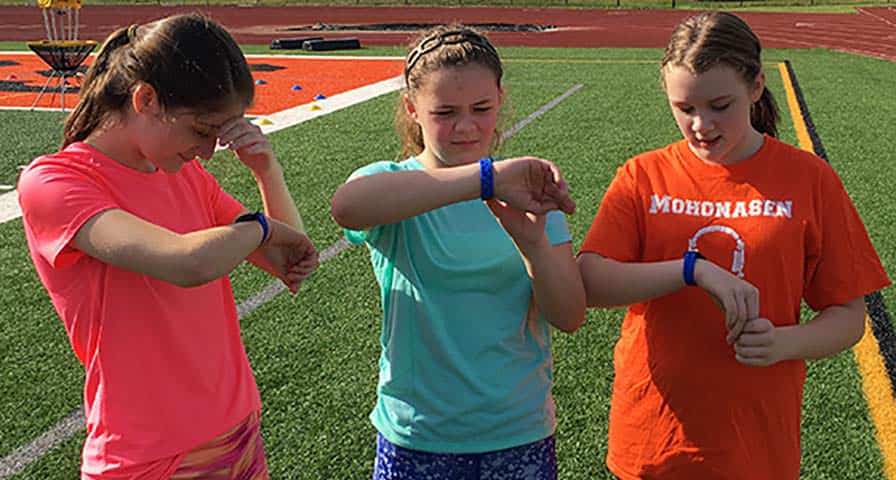To paraphrase the great Robert Earl Keen, the road goes on forever but the learning never ends.School may be out for summer, and while they take a well-deserved break from the classrooms, the next lesson plan is never far from a teacher’s mind. With that in mind, we at IHT want to do our part to help physical education teachers best utilize the IHT Spirit System as they work to teach students the importance of overall health and its relationship to their entire academic performance with PE assessment tips from teachers getting positive results.We can evaluate the performance reports all we want – and the data shows that students are working harder than ever to improve their physical conditioning. Of the 35 schools that used the IHT Spirit System the most in 2015-16, 29 logged more than 50 percent of their total workout time in the target heart rate zones. But what, exactly, drives those students to work hard?Every PE teacher has an idea of what works best for their students, what motivates them to work hard each class. The best teachers, though, are eager to learn from their colleagues. So, what have the teachers using the IHT Spirit System found as the best ways to get students working hard?
PE Assessment tips from teachers
Use – or create – activities that keep are easy to explain and keep everyone moving. A student, especially a younger student, who has to wait his turn or listen to extensive instruction is more apt to disengage from the class.
“We want every kid to be active, want every kid to feel included,” said Kelly McClennon at A. Maceo Smith New Tech High School in Dallas, Texas. “We try to find games where we can get as many kids as active as possible to play, like capture the flag. Anything with foam balls, they love.”
Be creative
The best games may not be the old tried-and-true games of our youth. Students enjoy games and activities that are brand new, especially if they helped invent the game.
“We invented a game called Call to Duty,” McClennon said. “Coach [William] Pittman had us playing a new game with a football, but you throw it into a lacrosse net. It’s fun, and you have 30 kids active at the same time.”
 The new invention doesn’t have to be a game. Students work just as hard when presented with a new drill, as the teachers at Woodford County (Ky.) Middle School learned from one of their students. When eighth grader Justin Lehmkuhler conducted an independent study using the IHT Spirit System monitors and data, he found out that students in his study group worked hardest while doing a drill called “Crazy Cardio Cones.”
The new invention doesn’t have to be a game. Students work just as hard when presented with a new drill, as the teachers at Woodford County (Ky.) Middle School learned from one of their students. When eighth grader Justin Lehmkuhler conducted an independent study using the IHT Spirit System monitors and data, he found out that students in his study group worked hardest while doing a drill called “Crazy Cardio Cones.”
“It’s like an obstacle course made out of cones,” said Woodford County teacher Rick Carr. “The kids do a series of drills like sliding, hurdling, agility ladder, etc. in succession without stopping as they travel up and down the gym floor. You’d almost have to see it to really get the total feel.”
Recreational games work too
Just because it doesn’t look hard doesn’t mean students won’t work hard.
Students at Portage Central (Mich.) burned more than 3.7 million calories during their PE classes this year, and not all of that came during PE assessments, circuit loops or other organized activities.
 “My kids really like recreational type/free play activities and frankly they getting the highest percentages of time in zone doing that stuff,” said Portage Central teacher John Dunlop.
“My kids really like recreational type/free play activities and frankly they getting the highest percentages of time in zone doing that stuff,” said Portage Central teacher John Dunlop.
Lehmkuhler’s study opened the door to an often-overlooked sport that his teachers felt wouldn’t encourage students to exert significant effort.
“That was great feedback for our students and it was also great for the PE teachers because a lot of the activities in PE,” Carr said. “You think you can’t play badminton because it doesn’t get your heart rate up enough, but we got some tremendous heart rate feedback from badminton.”
Let the children teach
Like everything else in life, we tend to work harder when we own something. Teachers found that students worked hardest when given ownership of that day’s workout.
McClennon has her upper-level PE students develop their own workouts that she then assesses.
“What I found was actually giving them the choice and letting them plan their own workout, they actually were always reaching and exceeding their goals,” she said. “They’d come in, put their monitors on and get right to work. That was very encouraging. You give them this choice to do what they want to do and they are out there working.”
At Nobel Charter (Calif.) Middle School, John Kruse saw his students start working harder when he praised them for pushing each other. Teamwork between classmates helped one student reach a goal for the first time. That success, paired with some positive reinforcement, motivated the rest of the class.
“I gave her a lot of praise that day, and then the next day I shared that with the class,” Kruse said. “That day, as a whole, 88 percent of them reached the goal. I shared that with them the following day, and then that day, everyone with the exception of one met the goal.”
Throughout the summer, we’ll share more of the IHT Spirit System users’ best practices from PE assessment tips to fundraising opportunities, and more. If you have something you’d like to share, please contact me at jay@ihtusa.com.


